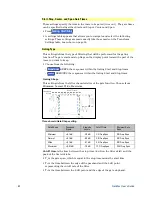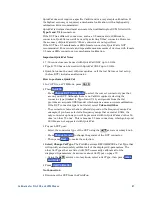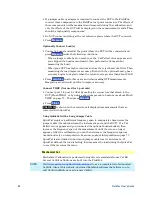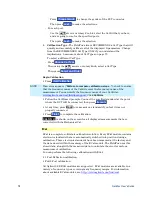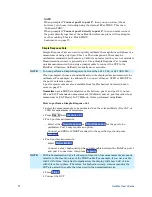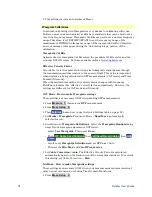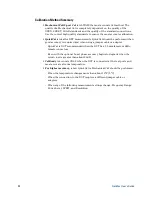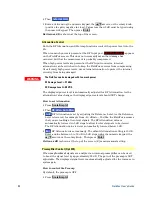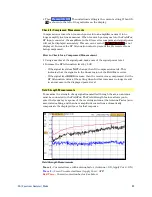
74
FieldFox User’s Guide
Defined THRU
– A THRU standard for which there is a Cal Kit definition such as
in the 8551xA Cal Kits.
Flush THRU
(also known as Zero length THRU) – When the test port cables mate
together when measuring an Insertable DUT. Flush THRU is also a Defined THRU
with a definition of zero loss and zero length.
Unknown THRU -
Any THRU connection between the test ports. For more
information see the FieldFox Supplemental Online Help:
http://na.tm.agilent.com/fieldfox/help/FieldFox.htm
Sweep Directions
– Both FULL 2-Port Cals listed below result in correction that
requires background measurements sweeps in both directions, regardless of the
displayed measurements. The displayed traces are updated at a slower rate than
Enhanced Response and 1-port calibrations, which require sweeps in one
direction only.
1-Port (OSL)
DUT: Not Applicable
S-parameters Corrected: S11 or S22
Standards: OPEN, SHORT, LOAD
Sweeps in ONE direction.
FULL 2-Port (May require an option).
Most comprehensive calibration. Corrects all S-parameters.
DUT: Non-Insertable or Insertable
Standards: OPEN, SHORT, LOAD on
BOTH
ports. Any THRU between ports.
Based on the SOLR/Unknown THRU calibration. For more information on the
Unknown THRU process, see the FieldFox Supplemental Online Help:
http://na.tm.agilent.com/fieldfox/help/FieldFox.htm
Sweeps in BOTH directions.
FULL 2-Port (QSOLT) – Mechanical Cal ONLY (May require an option).
Quicker to perform than Full 2-port. Corrects all S-parameters.
DUT: Insertable only
Standards: OPEN, SHORT, LOAD on port 1. Flush THRU between ports.
Recommended cal type for Insertable DUTs. A Cal Kit is NOT required for port 2.
Sweeps in BOTH directions.
Enhanced Response Cal - Forward OR Reverse (May require an option)
Faster measurements than Full 2-Port.
DUT: Non-Insertable or Insertable. S-parameters PARTIALLY Corrected: S21 and
S11 (Forward)
OR
S12 and S22 (Reverse)
Standards: OPEN, SHORT, LOAD on
ONE
port. Defined or Flush THRU between
ports.
Sweeps in ONE direction.
NOTE
Also select an Enhanced Response Optimization. Learn more on page 75.



